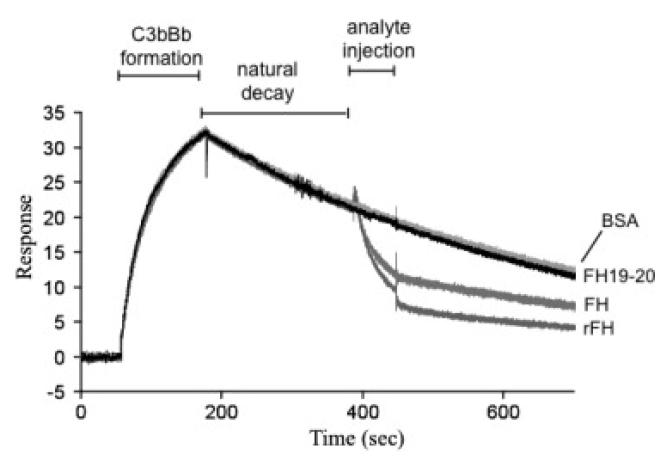Figure Six.
Decay-accelerating activity. Surface-plasmon resonance was used to monitor formation of the C3bBb (convertase) complex as factor D and factor B were flowed together over C3b that was amine-coupled to a CM5 (Biacore) sensor chip. The subsequent decline in response reflects decay of the complex as Bb is released from the chip surface. The rate of decay is accelerated by initiating (in this case 210 s into the natural decay process) a flow of reference FH or rFH. At similar concentrations (0.5 μM), rFH is a more effective decay accelerator in this assay than plasma-purified FH. The control proteins, BSA and FH modules 19-20, have no effect on decay. These are subtracted sensorgrams – details in Methods.

